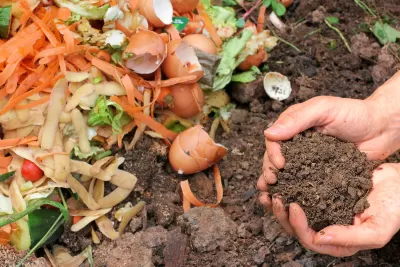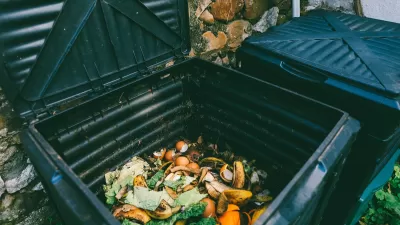The city wants to build the nation’s largest composting facility as part of its ‘zero waste’ efforts.

A $4 million Environmental Protection Agency (EPA) grant will help the city of Baltimore build the nation’s largest municipally managed composting facility, reports Christine Condon in the Baltimore Sun.
The proposed Bowley’s Lane Composting Facility will likely break ground in 2025. “According to its 10-Year Solid Waste Management Plan, Baltimore City already had plans to expand the Eastern Sanitation Yard along Bowleys Lane, near Moravia Road, to include a transfer station for trash trucks. According to an EPA fact sheet, the composting facility would be co-located with the new transfer station.”
The solar-powered facility will be able to process 12,000 tons of organic material each year. As Condon notes, “In 2021, Maryland legislators passed a law requiring certain large generators of food waste, such as higher education institutions, to separate their scraps for composting. But the law only applies to facilities within 30 miles of a compost facility with the capacity to handle their materials.”
FULL STORY: Baltimore receives federal funding to build composting facility

Study: Maui’s Plan to Convert Vacation Rentals to Long-Term Housing Could Cause Nearly $1 Billion Economic Loss
The plan would reduce visitor accommodation by 25,% resulting in 1,900 jobs lost.

North Texas Transit Leaders Tout Benefits of TOD for Growing Region
At a summit focused on transit-oriented development, policymakers discussed how North Texas’ expanded light rail system can serve as a tool for economic growth.

Why Should We Subsidize Public Transportation?
Many public transit agencies face financial stress due to rising costs, declining fare revenue, and declining subsidies. Transit advocates must provide a strong business case for increasing public transit funding.

How to Make US Trains Faster
Changes to boarding platforms and a switch to electric trains could improve U.S. passenger rail service without the added cost of high-speed rail.

Columbia’s Revitalized ‘Loop’ Is a Hub for Local Entrepreneurs
A focus on small businesses is helping a commercial corridor in Columbia, Missouri thrive.

Invasive Insect Threatens Minnesota’s Ash Forests
The Emerald Ash Borer is a rapidly spreading invasive pest threatening Minnesota’s ash trees, and homeowners are encouraged to plant diverse replacement species, avoid moving ash firewood, and monitor for signs of infestation.
Urban Design for Planners 1: Software Tools
This six-course series explores essential urban design concepts using open source software and equips planners with the tools they need to participate fully in the urban design process.
Planning for Universal Design
Learn the tools for implementing Universal Design in planning regulations.
City of Santa Clarita
Ascent Environmental
Institute for Housing and Urban Development Studies (IHS)
City of Grandview
Harvard GSD Executive Education
Toledo-Lucas County Plan Commissions
Salt Lake City
NYU Wagner Graduate School of Public Service



























